Key Takeaways
1. Professional decline is inevitable and comes sooner than expected
"Unless you follow the James Dean formula—'Live fast, die young, leave a good-looking corpse'—you know that your professional, physical, and mental decline is inevitable. You probably just think it's a long, long way off."
Peak performance varies by field. In most high-skill professions, decline sets in between one's late thirties and early fifties. This pattern holds true across various domains:
- Athletes: Peak in their 20s to early 30s
- Scientists: Most common age for great discoveries is late 30s
- Writers: Decline between 40 and 55
- Financial professionals: Peak between 36 and 40
- Doctors: Peak in their 30s, with steep drop-offs as they age
Decline is often more pronounced for high achievers. The more accomplished one is at the peak of their career, the more noticeable the decline becomes. This can lead to frustration and unhappiness if not properly addressed and prepared for.
2. There are two types of intelligence: fluid and crystallized
"When you are young, you have raw smarts; when you are old, you have wisdom. When you are young, you can generate lots of facts; when you are old, you know what they mean and how to use them."
Fluid intelligence refers to the ability to reason, think flexibly, and solve novel problems. It typically peaks in early adulthood and declines rapidly starting in one's thirties and forties. This type of intelligence is crucial for innovation and quick problem-solving.
Crystallized intelligence is the ability to use a stock of knowledge learned in the past. It tends to increase with age through one's forties, fifties, and sixties. This type of intelligence allows for:
- Better synthesis of complex ideas
- Improved ability to explain concepts to others
- Enhanced interpretation of others' ideas
- Greater wisdom in decision-making
The key to a successful second half of life is transitioning from relying primarily on fluid intelligence to leveraging crystallized intelligence. This shift allows for continued growth and contribution, albeit in different ways than earlier in one's career.
3. Success addiction and workaholism hinder happiness and growth
"Maybe I would prefer to be special rather than happy."
Success addiction is a pervasive problem among high achievers. It manifests as:
- Constant pursuit of external validation
- Difficulty finding satisfaction in current achievements
- Neglect of personal relationships and well-being
- Fear of failure and loss of status
Workaholism often accompanies success addiction, leading to:
- Excessive time spent on work-related activities
- Difficulty disengaging from work mentally
- Strained personal relationships
- Burnout and decreased overall life satisfaction
To break free from these addictions, one must:
- Recognize the problem and commit to change
- Redefine success based on internal values rather than external metrics
- Cultivate interests and relationships outside of work
- Practice mindfulness and gratitude for present achievements
4. Chipping away attachments is key to finding true satisfaction
"Satisfaction = What you have ÷ what you want"
Identify and release unhealthy attachments. These may include:
- Material possessions
- Social status
- Professional titles
- External validation
Focus on intrinsic goals rather than extrinsic rewards. This involves:
- Cultivating meaningful relationships
- Pursuing personal growth and learning
- Contributing to something greater than oneself
- Finding purpose beyond professional achievements
Practice the "reverse bucket list." Instead of constantly adding to your list of desires:
- Identify current wants and attachments
- Imagine your ideal, satisfied future self
- Evaluate how current attachments compete with true happiness
- Consciously detach from desires that hinder long-term fulfillment
By managing wants and focusing on what truly matters, one can increase overall life satisfaction and prepare for a fulfilling second half of life.
5. Contemplating death leads to a more meaningful life
"To begin depriving death of its greatest advantage over us, let us deprive death of its strangeness, let us frequent it, let us get used to it; let us have nothing more often in mind than death."
Facing mortality enhances life appreciation. Regular contemplation of death can:
- Increase mindfulness of the present moment
- Clarify personal values and priorities
- Motivate purposeful living
- Reduce fear and anxiety about the future
Practice death meditation. Consider the following exercise:
- Envision various stages of physical decline
- Imagine decreasing professional relevance
- Contemplate complete obscurity and being forgotten
- Reflect on the impermanence of all things
Focus on "eulogy virtues" rather than "résumé virtues." This shift in perspective encourages:
- Development of character over achievement
- Emphasis on relationships and kindness
- Pursuit of meaningful legacy beyond professional success
- Alignment of daily actions with core values
By regularly confronting the reality of death, one can paradoxically find greater meaning and fulfillment in life.
6. Cultivating deep relationships is crucial for well-being
"Happiness is love. Full stop."
Quality relationships are the foundation of happiness. Research consistently shows that strong social connections lead to:
- Better physical health
- Improved mental well-being
- Increased longevity
- Greater resilience in facing life's challenges
Invest in various types of relationships:
- Romantic partnerships: Focus on companionate love and shared growth
- Close friendships: Cultivate a few deep, authentic connections
- Family ties: Nurture bonds with children, siblings, and extended family
- Community involvement: Engage in social groups and volunteer activities
Combat loneliness actively. Strategies include:
- Prioritize face-to-face interactions over digital communication
- Join interest-based groups or classes
- Volunteer for causes you care about
- Practice vulnerability and openness in existing relationships
Remember that building and maintaining meaningful relationships requires consistent effort and time investment, but the rewards are immeasurable in terms of life satisfaction and overall well-being.
7. Embracing weakness can become a source of strength
"Therefore I will boast all the more gladly about my weaknesses, so that Christ's power may rest on me. That is why, for Christ's sake, I delight in weaknesses, in insults, in hardships, in persecutions, in difficulties. For when I am weak, then I am strong."
Vulnerability fosters deeper connections. By openly acknowledging weaknesses and struggles, one can:
- Build authentic relationships
- Inspire others facing similar challenges
- Develop greater empathy and compassion
- Create opportunities for personal growth
Reframe weakness as opportunity. Examples include:
- Using physical limitations to develop new skills or perspectives
- Leveraging past failures as valuable learning experiences
- Transforming personal struggles into platforms for helping others
- Finding creative solutions that arise from constraints
Practice defenselessness. This involves:
- Letting go of the need to always appear strong or competent
- Admitting mistakes and seeking help when needed
- Sharing vulnerabilities with trusted individuals
- Embracing imperfection as a natural part of the human experience
By making peace with weaknesses and limitations, one can paradoxically become more resilient, relatable, and ultimately stronger.
8. Transitioning to a new life phase requires courage and purpose
"Don't think, dude. Just jump."
Embrace liminality. The transitional period between life stages can be uncomfortable but offers great potential for growth and reinvention. Key aspects include:
- Accepting uncertainty and ambiguity
- Exploring new possibilities without immediate commitment
- Allowing old identities to evolve or fade
- Remaining open to unexpected opportunities
Identify your "marshmallow." To navigate transition successfully:
- Define clear goals for your next life phase
- Seek intrinsically rewarding activities
- Pursue work that is both enjoyable and meaningful
- Be open to non-linear career paths
Practical steps for transition:
- Allocate time for reflection and planning
- Invest in relationships that support your new direction
- Develop new skills relevant to your goals
- Practice letting go of outdated self-concepts
Remember that transition is a natural part of life. By approaching it with courage, purpose, and openness, you can create a fulfilling and impactful second half of life.
Last updated:
FAQ
What's From Strength to Strength about?
- Focus on Life's Second Half: The book explores how to find success, happiness, and deep purpose in the second half of life, particularly as professional decline becomes inevitable.
- Striver's Curse: Arthur C. Brooks introduces the concept of the "striver's curse," where high achievers face dissatisfaction and fear of decline as they age.
- Transitioning to New Success: Brooks provides a roadmap for transitioning from a focus on worldly success to a more meaningful life, emphasizing the importance of relationships, spirituality, and embracing weaknesses.
Why should I read From Strength to Strength?
- Personal Growth: The book offers insights into navigating the challenges of aging and professional decline, making it relevant for anyone in midlife or beyond.
- Practical Strategies: Brooks shares actionable advice and methods to help readers cultivate happiness and purpose, such as developing relationships and embracing one's weaknesses.
- Universal Themes: The themes of success, happiness, and purpose resonate with a wide audience, making it a valuable read for those seeking fulfillment in their lives.
What are the key takeaways of From Strength to Strength?
- Inevitability of Decline: Accept that professional decline is a natural part of life, often occurring sooner than expected, and prepare for it.
- Crystallized vs. Fluid Intelligence: Understand the difference between fluid intelligence (problem-solving and innovation) that declines with age and crystallized intelligence (wisdom and knowledge) that can grow.
- Importance of Relationships: Cultivating strong relationships is essential for happiness and well-being, especially as one transitions into the later stages of life.
What is the "striver's curse" in From Strength to Strength?
- Definition of Striver's Curse: Brooks describes the "striver's curse" as the phenomenon where high achievers experience dissatisfaction and fear of decline as they age, despite their past successes.
- Emotional Impact: This curse leads to feelings of emptiness and anxiety about losing one's status and relevance, which can overshadow previous accomplishments.
- Path to Resolution: The book outlines strategies to overcome this curse by shifting focus from external validation to internal fulfillment and meaningful relationships.
How does Arthur C. Brooks suggest dealing with professional decline in From Strength to Strength?
- Acceptance of Change: Brooks emphasizes the importance of accepting that decline is inevitable and reframing it as an opportunity for growth and new success.
- Embrace Weaknesses: He advises readers to embrace their weaknesses and let go of the need to maintain past levels of achievement, allowing for personal reinvention.
- Focus on Relationships: Building and nurturing relationships is crucial, as they provide support and fulfillment that can counterbalance feelings of decline.
What is the "second curve" in From Strength to Strength?
- Concept of Second Curve: The "second curve" refers to the idea that as one’s professional abilities decline, there is an opportunity to transition to a new phase of life that emphasizes wisdom, relationships, and personal fulfillment.
- Crystallized Intelligence Growth: This curve is characterized by the growth of crystallized intelligence, which encompasses accumulated knowledge and experience, allowing for new forms of success.
- Practical Application: Brooks provides methods for identifying and pursuing this second curve, encouraging readers to shift their focus from competition to collaboration and mentorship.
What is "success addiction" according to From Strength to Strength?
- Definition of Success Addiction: Brooks defines success addiction as an obsession with achievements and external validation, which can lead to neglecting personal relationships and inner fulfillment.
- Consequences: This addiction often results in feelings of emptiness and loneliness, as individuals prioritize work over meaningful connections with others.
- Path to Recovery: The author suggests making amends and actively working to rebuild relationships as a way to recover from success addiction.
How does Brooks suggest we measure our lives in From Strength to Strength?
- Clayton Christensen's Influence: Brooks adopts ideas from Christensen's How Will You Measure Your Life?, encouraging readers to reflect on what truly matters in their lives.
- Allocating Time: He emphasizes the importance of intentionally allocating time to relationships and meaningful activities rather than just focusing on work.
- Visualizing Legacy: Brooks recommends visualizing oneself at the end of life and considering what one wants to be remembered for, guiding daily choices and priorities.
What are the "ashramas" mentioned in From Strength to Strength?
- Four Stages of Life: The ashramas are a Hindu concept that divides life into four stages: brahmacharya (student), grihastha (householder), vanaprastha (hermit), and sannyasa (renunciant).
- Transitioning to Vanaprastha: Brooks emphasizes the importance of moving into the vanaprastha stage, where individuals begin to withdraw from worldly duties and focus on spiritual growth and wisdom.
- Spiritual Development: This transition is crucial for finding deeper meaning and preparing for the final stage of life, sannyasa, which is dedicated to enlightenment.
What role do relationships play in From Strength to Strength?
- Foundation of Happiness: Brooks asserts that strong relationships are the cornerstone of a fulfilling life, especially in the second half of life.
- Rebuilding Connections: The author encourages readers to actively work on rekindling relationships that may have been neglected due to a focus on career and success.
- Making Amends: He draws parallels to recovery programs, suggesting that making amends with those hurt by one's success addiction is essential for healing and rebuilding trust.
What are some of the best quotes from From Strength to Strength and what do they mean?
- "Happiness is love. Full stop.": This quote encapsulates the central message that love and relationships are the most significant contributors to happiness, more than any material success.
- "You can’t take it with you.": This serves as a reminder that material possessions and professional accolades are ultimately transient, and what matters most are the connections we make.
- "We can go from strength to strength.": This quote reflects the book's optimistic view that even in decline, individuals can find new strengths and paths to fulfillment.
How can I start implementing the advice from From Strength to Strength?
- Reflect on Your Life: Begin by assessing your current priorities and relationships, considering where you may need to make changes or improvements.
- Set Intrinsic Goals: Shift your focus from extrinsic achievements to intrinsic values, such as nurturing relationships and pursuing meaningful activities.
- Take Action: Start small by reaching out to friends or family members, making time for loved ones, and engaging in activities that bring you joy and fulfillment.
Review Summary
From Strength to Strength receives mixed reviews. Some readers praise its insights on transitioning to life's second half, finding purpose, and embracing wisdom over raw intelligence. Others criticize its repetitiveness, lack of novel ideas, and focus on privileged audiences. The book's discussion of fluid versus crystallized intelligence resonates with many, while its religious undertones and perceived elitism alienate others. Readers appreciate Brooks' personal anecdotes but find some advice common sense. Overall, the book sparks reflection on aging, success, and happiness, though its impact varies widely among readers.
Similar Books
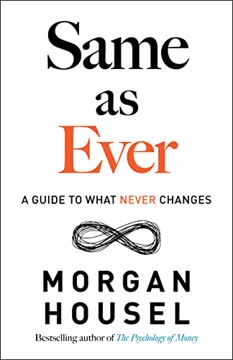


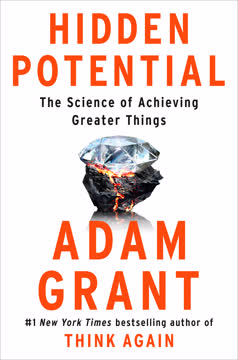
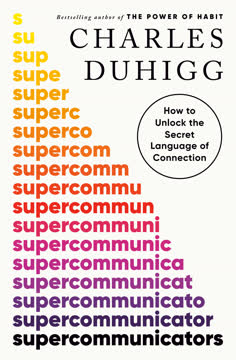
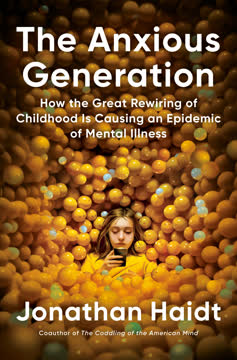
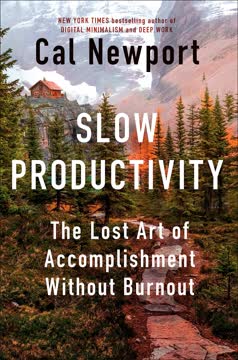



Download PDF
Download EPUB
.epub digital book format is ideal for reading ebooks on phones, tablets, and e-readers.







